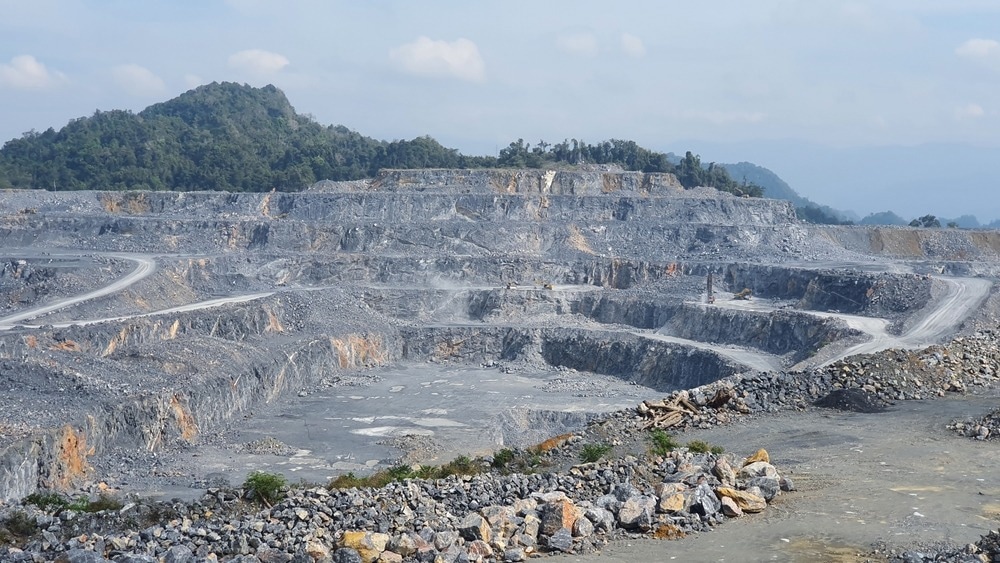In a recent article published in Scientific Reports, researchers focused on enhancing environmental sustainability and operational efficiency within quarrying operations, specifically targeting a limestone quarry operated by the National Cement Factory in Ethiopia.
Recognizing the significant environmental challenges posed by open-pit mining in arid climates, such as air pollution, dust emissions, and noise pollution, the authors explore innovative technological and ecological approaches to mitigate these impacts. Integrating automated environmental monitoring systems utilizing Internet of Things (IoT) sensors and machine learning algorithms forms the core of the strategy.

Image Credit: Parmna/Shutterstock.com
Background
The environmental impact of quarrying has been widely studied, particularly in regions with fragile ecosystems like arid and semi-arid zones. In these environments, dust emissions, noise pollution, and soil erosion are common challenges often intensified by harsh climate conditions and scarce water resources.
Research consistently underscores the need for mitigation strategies that balance economic output and ecological sustainability. Traditional monitoring methods, which typically rely on manual sampling and periodic measurements, fall short regarding timely intervention, especially in mining areas where environmental conditions can change rapidly.
Recent advances in technology, such as IoT-enabled sensors and machine learning algorithms, offer promising solutions for continuous monitoring and smarter data analysis. These tools allow for more accurate tracking of environmental indicators and support eco-conscious practices like using environmentally safe dust suppressants and implementing land rehabilitation efforts.
However, there is still a noticeable gap in the application of integrated tech solutions specifically designed for the challenges of arid landscapes. This study aims to help fill that gap by showcasing how such technologies can be practically applied and optimized in these demanding environments.
The Current Study
The research employs a case study methodology, focusing on the limestone quarry at the National Cement Factory in Eastern Ethiopia. The study deployment involves strategic placement of IoT sensors across various points within the quarry to continuously monitor air quality indicators—including particulate matter (PM2.5 and PM10), nitrogen dioxide (NO₂), and noise levels.
The sensors transmit data in real-time to a centralized system, where machine learning algorithms process this information to identify patterns, forecast pollution spikes, and suggest timely interventions. To evaluate the effectiveness of the intervention strategies, the researchers conducted before-and-after comparisons of environmental data, encompassing several parameters such as dust concentrations, noise levels, and vegetation cover. The dust suppression measures included the application of non-toxic suppressants and operational modifications to reduce dust emission sources, while noise control involved the installation of barriers and operational adjustments.
Results and Discussion
Implementing integrated technological and ecological strategies yielded significant improvements in environmental conditions within the quarrying site.
Quantitative data demonstrated that dust levels, measured by PM10 and PM2.5 concentrations, decreased by approximately 45% and 47%, respectively, compared to baseline measurements prior to intervention.
Nitrogen dioxide levels also saw a substantial reduction of 40%, indicating better management of emissions from machinery and blasting operations. Noise pollution experienced a decline of roughly 15%, with the measured noise levels in critical zones falling below regulatory thresholds, thus contributing to safer and more community-friendly work environments.
The ecological efforts resulted in a remarkable increase in vegetation cover—up to 266%—effectively restoring natural biodiversity and stabilizing soil against erosion. The real-time data collected through IoT sensors facilitated immediate interventions, such as adjusting water sprays or activating dust suppressants, which contributed directly to these improvements.
The findings underscored the pivotal role of advanced monitoring technologies in transforming traditional mining practices into sustainable operations. The significant reductions in dust and noise levels demonstrated the effectiveness of combining real-time data collection with targeted mitigation measures.
The high accuracy of machine learning predictions confirmed the utility of predictive analytics in early hazard detection and resource allocation, minimizing environmental impacts before they escalate. The ecological restoration practices, especially planting indigenous vegetation, proved crucial in stabilizing the disturbed land, enhancing biodiversity, and preventing soil erosion. These practices were particularly effective given the arid context, where water-efficient techniques and drought-resistant species are essential.
Conclusion
This research demonstrates that integrating automated environmental monitoring systems, machine learning-driven predictive analytics, and sustainable ecological practices effectively enhances the environmental sustainability and operational efficiency of limestone quarrying in arid regions.
The significant reductions in dust emissions, noise pollution, and soil erosion—coupled with increased vegetation cover—highlight the potential for technologically driven solutions to address the unique challenges of semi-arid and arid mining environments. By showcasing the successful implementation at the Ethiopian quarry, the research provides a scalable model for similar projects in other regions facing comparable environmental constraints. The authors advocate for broader adoption of these integrated approaches, emphasizing the need for continuous technological innovation, stakeholder engagement, and policy support to realize sustainable mining that benefits industry and the environment.
Source:
Saleem H.A. and Ayalew A.T. (2025). Enhancing environmental sustainability and operational efficiency in a case study of limestone quarry in an arid climate. Scientific Reports 15, 18884. DOI: 10.1038/s41598-025-01230-9, https://www.nature.com/articles/s41598-025-01230-9